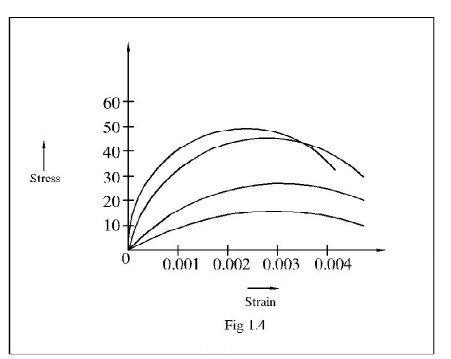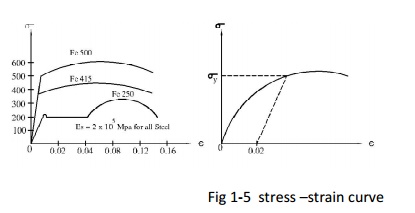Chapter: Civil : Design of Reinforced Concrete Elements : Methods Of Design Of Concrete Structures
Materials for Reinforced Concrete

Materials
for Reinforced Concrete
Concrete
Concrete is a composite material consists
essentially of
a) A
binding medium cement and water called cement paste
b) Particles
of a relatively inert filler called aggregate
The selection of the
relative proportions of cement, water and aggregate is called 'mix design'
Basic requirement of a good concrete are workability, strength, durability and
economy. Depending upon the intended use the cement may be OPC (33,43 & 53
Grade), Rapid hardening cements Portland slag, Portland pozzolona etc. High
cement content give rise to increased shrinkage, creep and cracking. Minimum
cement content is 300Kg/m3 and maximum being 450Kg/m3 as
per Indian code. Mineral additives like fly ash , silica fume, rice husk ash,
metakoline and ground granulated blast furnace slag may be used to reduce micro
cracks . The aggregate used is primarily for the purpose of providing bulk to
the concrete and constitutes 60 to 80 percent of finished product. Fine
aggregates are used to increase the workability and uniformly of concrete
mixture. Water used for mixing and curing shall be clean and free from oil,
acids, alkalis, salts, sugar etc. The diverse requirements of mixability,
stability, transportability place ability, mobility, compatibility of fresh
concrete are collectively referred to as workability.
Compressive strength of
concrete on 28th day after casting is considered as one of the
measure of quality. At least 4 specimens of cubes should be tested for
acceptance criteria.
Grade
of concrete
Based
on the compressive strength of concrete, they are designated with letter H
followed by an integer number represented characteristic strength of concrete,
measured using 150mm size cube. Characteristic strength is defined us the
strength of material below which not more than 5% of test results are expected
to full. The concrete grade M10, M15 and M20 are termed as ordinary concrete
and those of M25 to M55 are termed as standard concrete and the concrete of
grade 60 and above are termed as high strength concrete. The selection of
minimum grade of concrete is dictated by durability considerations which are
based on kind of environment to which the structure is exposed, though the
minimum grade of concrete for reinforced concrete is specified as M20 under
mild exposure conditions, it is advisable to adopt a higher grade. For
moderate, severe, very severe and extreme exposure conditions, M25, M30, M35
& M40 grades respectively are recommended. Typical stress-strain curves of
concrete is shown in Fig.1.4

Reinforcing
steel
Steel
bars are often used in concrete to take case of tensile stresses. Often they
are called as rebars, steel bar induces ductility to composite material i.e
reinforced concrete steel is stronger than concrete in compression also. Plain
mild steel bars or deformed bars are generally used. Due to poor bond strength
plain bars are not used. High strength deformed bars generally cold twisted
(CTD) are used in reinforced concrete. During beginning of 21st century,
Thermo-mechanical tream (TMT) bars which has ribs on surface are used in
reinforced concrete. Yield strength of steel bars are denoted as characteristic
strength. Yield strength of mild steel is 250MPa, yield strength of CTD
&TMT bars available in market has 415 MPa or 500 MPa or 550MPa. TMT bars
have better elongation than CTD bars. Stress-strain curve of CTD bars or TMT
bars do not have definite yield point, hence 0.2% proof stress is used as yield
strength. Fig 1.5 shows stress strain curve of different steel grades. Steel
grades are indicated by Fe followed by yield strength. In the drawings of RCC,
denotes MS bar and # denotes CTD or TMT bars.

Related Topics